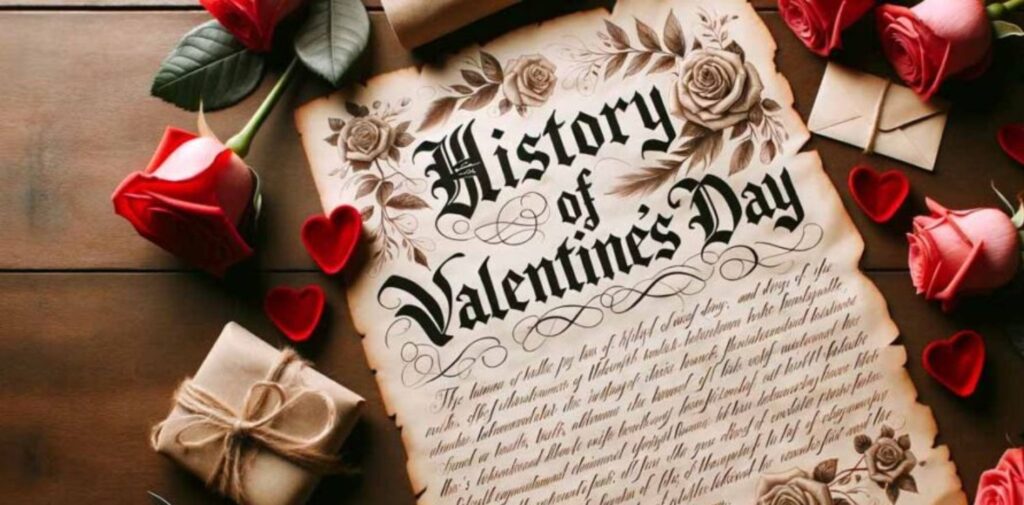Every year, on 14th February, the world celebrates Valentine’s Day, a day filled with love, affection, and gestures of kindness. This day is dedicated to celebrating romantic relationships, friendships, and the bonds that unite people. While it is popularly known for the exchange of cards, chocolates, and flowers, the origins of Valentines Day are rich in history and filled with mystery.
In India, like many other parts of the world, Valentine’s Day has become widely celebrated, especially among young people. It’s a day when people express their feelings of love towards their partners, friends, and even family members. But how did this day come to be? What’s the story behind it? Why do we celebrate it every year?
In this article, we will explore the history of Valentine’s Day, its origins, how it has evolved over time, and why people across the globe continue to observe this special day.
The Origins of Valentines Day: A Mysterious History
The history of Valentine’s Day dates back to ancient times. The exact origins of the holiday are unclear, but there are several theories about how it came to be.
1. The Roman Festival of Lupercalia
One of the most commonly cited origins of Valentine’s Day is the ancient Roman festival called Lupercalia, which was celebrated on 15th February. Lupercalia was a festival dedicated to fertility and love, and it involved sacrifices, feasting, and matchmaking.
During this festival, Roman priests would sacrifice goats and dogs and use their skins to create whips. The whips were then used to gently strike women in the belief that it would increase their fertility. Additionally, young women and men would draw names from a box, and the name they drew would determine their partner for the year. In some cases, this pairing could lead to marriage.
Although Lupercalia was a pagan festival and was not directly related to Saint Valentine, it’s believed that the Christian church later adapted this festival into Valentine’s Day, transforming it from a celebration of fertility into one of love and romance.
2. Saint Valentine: The Legend
The most popular theory about the origins of Valentines Day centers around the story of Saint Valentine, a Christian martyr. Saint Valentine is said to have been a priest who lived during the Roman Empire in the 3rd century CE.
Emperor Claudius II, known for his military conquests, banned marriages for young men, believing that single soldiers made better warriors than those with families. Valentine, however, defied the emperor’s orders and secretly performed marriages for young couples. When Claudius II discovered Valentine’s actions, he had him arrested and sentenced to death.
During his imprisonment, Valentine is said to have developed a friendship with the jailer’s daughter. On the day of his execution, he reportedly sent her a letter, signing it “From Your Valentine,” which is believed to be the origin of the tradition of writing love letters on Valentine’s Day.
Saint Valentine was executed on 14th February around the year 269 CE, and the day became a day of remembrance for his acts of love and compassion.

The Evolution of Valentine’s Day
While the legend of Saint Valentine is one of the most well-known explanations for the origins of Valentines Day, the holiday has undergone significant changes over the centuries.
1. The Christianization of Lupercalia
As Christianity spread across the Roman Empire, the Christian church sought to replace pagan festivals with Christian holidays. Pope Gelasius I is said to have established the feast of Saint Valentine on 14th February in the 5th century to replace the pagan festival of Lupercalia. This led to the celebration of love and affection on 14th February, as opposed to the fertility rituals associated with Lupercalia.
2. The Middle Ages: Courtly Love
During the Middle Ages in Europe, the concept of courtly love began to take shape. Courtly love was a type of noble, idealized love that was often expressed through poetry, songs, and gestures of devotion. It was during this period that the idea of celebrating love on 14th February gained popularity, as it was believed to be the day when birds started pairing for the spring season.
In France and England, people began sending love notes and poems to one another. Some of the earliest known Valentines Day cards were written during this time, and the tradition of exchanging romantic messages on 14th February became widely practiced.
3. The Renaissance and Beyond
By the 16th and 17th centuries, Valentines Day had become firmly established as a day for lovers. In England, it became common for lovers to exchange handmade cards, gifts, and tokens of affection. The tradition of sending Valentine’s Day cards spread to the United States in the 18th century, where it continued to grow in popularity.
In the 19th century, the introduction of mass-produced Valentine’s Day cards revolutionized the holiday. The advent of the printing press allowed for cards with romantic verses and illustrations to be easily distributed, making it accessible to a larger audience.

Valentine’s Day in the Modern Era
In today’s world, Valentine’s Day is celebrated globally, and it has taken on a commercial aspect. While the true spirit of the day remains about celebrating love and affection, it has become a day when people exchange gifts such as chocolates, flowers (particularly roses), and jewelry.
In India, Valentines Day is celebrated with great enthusiasm, especially among the youth. Many people go out for romantic dinners, send flowers, or exchange gifts as a way of expressing their love. However, not everyone in India embraces the holiday, as some view it as a foreign tradition. Despite this, the popularity of Valentine’s Day continues to grow in urban areas, where young people often take part in the celebrations.
In addition to romantic love, Valentine’s Day is also an opportunity to show appreciation for friends, family members, and even pets. The day has expanded beyond its original focus on romantic love, and people often use it as an occasion to express affection in various forms.
Why Do We Celebrate Valentine’s Day?
Valentine’s Day has evolved over the centuries from a religious observance to a secular celebration of love and affection. Here are a few reasons why we continue to celebrate this special day:
- To Celebrate Love: The primary reason for celebrating Valentines Day is to acknowledge and celebrate love in all its forms. It’s a day to express affection for romantic partners, friends, family members, and even pets.
- To Strengthen Relationships: Valentines Day serves as an opportunity to strengthen relationships by showing appreciation for loved ones. Whether it’s through a heartfelt letter, a thoughtful gift, or a simple gesture of kindness, Valentine’s Day encourages people to express their feelings.
- To Express Gratitude: In addition to romantic love, Valentine’s Day also provides a chance to express gratitude to those who support and care for us. It can be a day to thank family members, friends, colleagues, or mentors for their love and encouragement.
- To Spread Positivity: Valentines Day is a day of positivity, where people are encouraged to share happiness and love with others. It is an occasion to spread joy, kindness, and compassion in a world that sometimes feels divided.

Conclusion
Valentine’s Day on 14th February is much more than just a celebration of romantic love. It is a day that has deep historical roots, shaped by legends, traditions, and cultural changes over time. From its origins in ancient Rome to its current global celebrations, Valentines Day has remained a day to celebrate the most powerful emotion of all—love.
In India, as in many other parts of the world, Valentine’s Day serves as an opportunity to express affection and appreciation for those we care about. Whether it’s through small acts of kindness, thoughtful gifts, or meaningful gestures, Valentine’s Day is a reminder to cherish the people who bring love and happiness into our lives.
So, this 14th February, let’s take a moment to celebrate love in all its forms—whether romantic, familial, or platonic—and make this day a meaningful celebration of affection, kindness, and connection.




